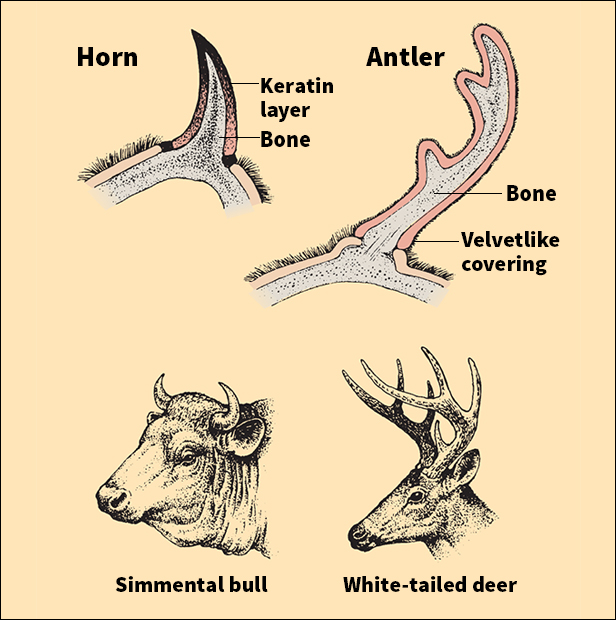Horn is a pointed, bony structure on the heads of many mammals. Most horned animals have a pair of horns. Such animals as cattle, sheep, goats, and antelope have true horns. Deer have hornlike growths that are not true horns. These growths are called antlers.

Horns have a bony core. The core is an extension of one of the skull bones. A layer of skin covers the core. This skin contains a protein called keratin that makes the horn extremely tough and durable. See Keratin.

Among many horned animals, both the male and the female grow horns. The horns may be elaborately curved, but–except in the pronghorn–they do not form branches as do antlers. Horned animals keep their horns for life. The pronghorn sheds the coverings of its horns and grows new coverings each year.
Among most antlered animals, only the male grows antlers. The animal sheds its antlers every year. Like horns, antlers grow out of bones in the skull. At first, antlers have a velvetlike covering of skin over the bone. But instead of becoming hard, this covering dies and is rubbed off by the animal. See Deer (Antlers).
Horns and antlers have a number of functions. They serve as weapons to protect the animals from attack. Male animals sometimes use their horns or antlers to fight other males in the group. Such fighting establishes which male is the most important. More often, a male avoids a fight and establishes his superiority through gestures that may include displaying and threatening to use his horns or antlers.
